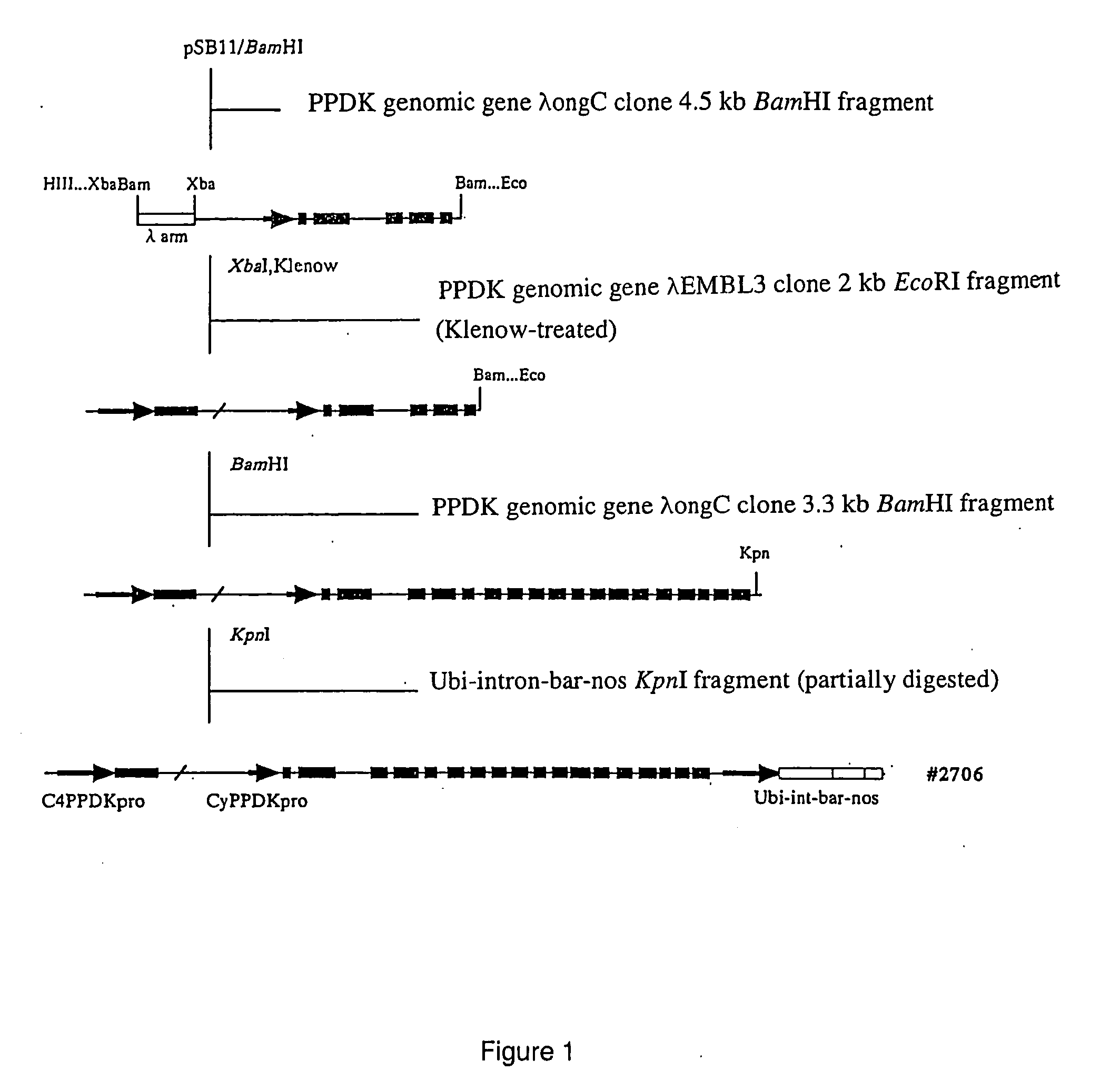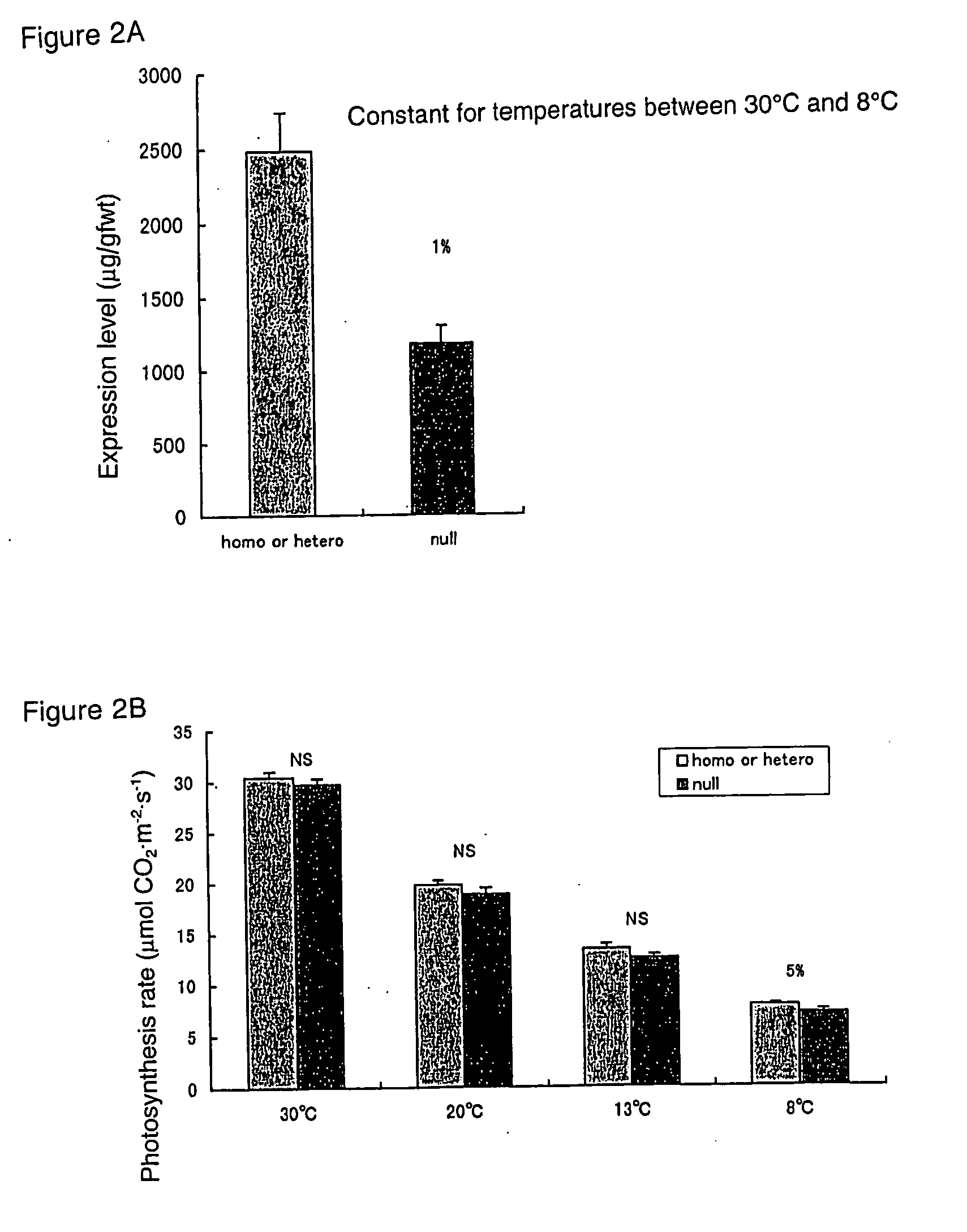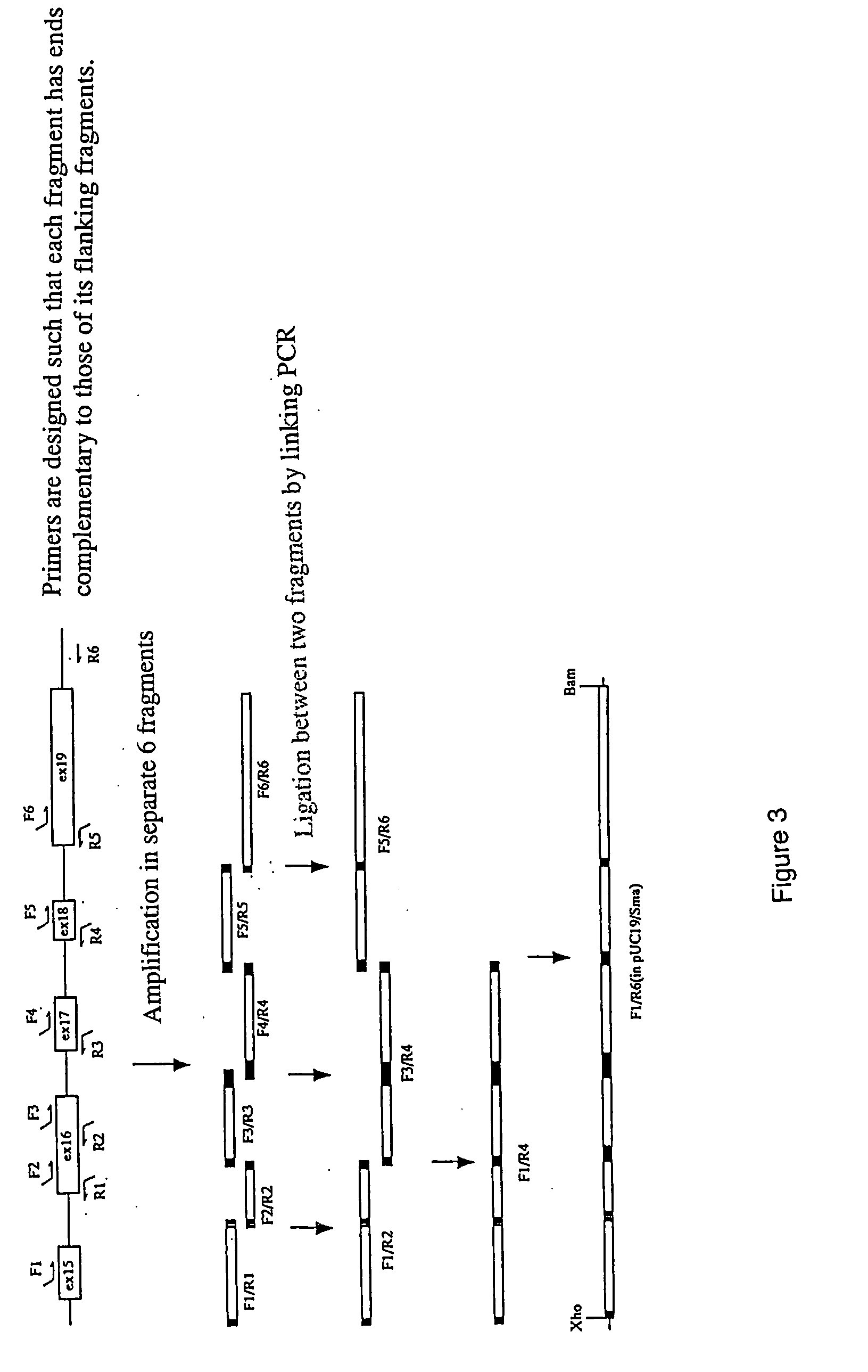Method of elevating photosynthesis speed of plant by improving pyruvate phosphate dikinase
a technology of pyruvate phosphate and plant photosynthesis, which is applied in the direction of enzymology, transferases, fused cells, etc., can solve the problems of inability to achieve specific inhibition of endogenous ppdk, inability to clarify the effects of the introduced gene, and inability to grow transformants. to achieve the effect of no inhibitory effect on expression levels
- Summary
- Abstract
- Description
- Claims
- Application Information
AI Technical Summary
Benefits of technology
Problems solved by technology
Method used
Image
Examples
example 1
(Construction of #2706)
[0083] In order to introduce the unmodified maize PPDK genomic gene into maize, a gene used for transformation (#2706) was constructed as follows.
[0084] A 4.5 kb BamHI fragment covering from the latter half of Intron 1 to the first half of Intron 6 was cleaved from the maize PPDK genome cloned in λongC (Matsuoka M, 1990) and then inserted into a BamHI site of pSB11 (Komari T, Hiei Y, Saito Y, Murai N, Kumashiro T, Vectors carrying two separate T-DNAs for co-transformation of higher plants mediated by Agrobacterium tumefaciens and segregation of transformants free from selection marker, Plant J, 10:165-175, 1996). This plasmid was digested with XbaI to remove the λ arm segment and then blunt-ended with Klenow enzyme. The resulting fragment was ligated to a similarly blunt-ended 2 kb EcoRI fragment (covering from the promoter region to the middle of Intron 1) cleaved from the PPDK genome cloned in λEMBL3 (Matsuoka M, 1990). Subsequently, a 3.3 kb BamHI fragme...
example 2
[0090] Next, the inventors of the present invention attempted to modify the maize PPDK genomic gene into a cold-tolerant type. In the previous studies, the inventors of the present invention had already succeeded in artificially creating a cold-tolerant PPDK gene by forming a chimeric gene between cDNAs (WO95 / 15385). They in turn created a modified maize PPDK genomic gene whose sequence was partially replaced with the F. brownii PPDK cDNA such that the resulting spliced mRNA was identical with mRNA prepared from the cold-tolerant chimeric gene between cDNAs. This chimeric gene was then introduced into maize, but resulting in low level expression. This result would be brought about by elimination of introns naturally occurring in the genomic gene due to partial replacement of the genomic gene with the cDNA.
[0091] For this reason, with the aim of modifying the maize PPDK genomic gene into a cold-tolerant type while leaving its structure as intact as possible, point mutations were int...
example 3
[0102] Further, the inventors of the present invention examined PPDK activity in the transgenic maize plants having the cold tolerance-improved genomic gene introduced thereinto. In the experiment, several maize plants with different expression levels of PPDK were used along with F. brownii and a maize inbred line (A188) as controls. A green leaf extract collected from leaves of each plant was desalted on a Sephadex G25 column and then allowed to stand at 0° C. (on ice), followed by periodical verification of PPDK activity to monitor the time course of the change in PPDK activity under low temperature conditions. PPDK activity was determined in a general manner (Jenkins C L, Hatch M D, Properties and reaction mechanism of C4 leaf pyruvate, Pi dikinase, Arch Biochem Biophys, 239:53-62, 1985).
[0103] The results are shown in FIG. 8. It could be confirmed that transformants with high expression levels of PPDK were resistant to deactivation, even on ice, as in the case of F. brownii.
PUM
| Property | Measurement | Unit |
|---|---|---|
| Fraction | aaaaa | aaaaa |
| Temperature | aaaaa | aaaaa |
| Level | aaaaa | aaaaa |
Abstract
Description
Claims
Application Information
 Login to View More
Login to View More - R&D
- Intellectual Property
- Life Sciences
- Materials
- Tech Scout
- Unparalleled Data Quality
- Higher Quality Content
- 60% Fewer Hallucinations
Browse by: Latest US Patents, China's latest patents, Technical Efficacy Thesaurus, Application Domain, Technology Topic, Popular Technical Reports.
© 2025 PatSnap. All rights reserved.Legal|Privacy policy|Modern Slavery Act Transparency Statement|Sitemap|About US| Contact US: help@patsnap.com



